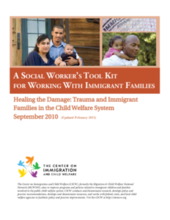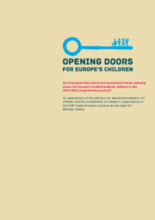Demographic Data
|
Sources: World Bank, UNDP, UNAIDS, DHS 2013 |
Displaying 11651 - 11660 of 14391
This article analyses on the phenomenon of orphanage tourism/ childcare tourism in Cambodia and its social and economic impacts by interviewing the managers directors or volunteer coordinators of nine residential care facilities and to develop recommendations and guidelines for the residential care centres and volunteer organisations to improve the volunteering practice in the future.
Muhammadiyah, a member of Family for Every Child, has launched a new alliance with fellow Indonesian NGOs, to encourage the use of family-based alternative care for children and promote the use of institutional care only as a last result for children in Indonesia.
This toolkit, originally published in September 2010 and updated in February 2015, serves as a resource for social workers in the US who are working with immigrant families within the child welfare system.
This paper provides a brief overview of basic family structures in EU countries and a description of family breakdown and its impact on children’s wellbeing.
This paper discusses and examines the lessons learned from the Munro Review relevant for looked after children. The Munro Review provides an analysis of the current state of the child protection system, challenging bureaucratised practice and arguing for a reclaiming of professional social work identity, knowledge and understanding.
This editorial piece from the Child & Youth Services journal makes observations about the children who live away from home and their vulnerability to violence, the shift in the use of violence as a threat to democracy to its use as a defense of democracy, and the exclusion of young people from globalization.
This paper combines data on the age distribution of current and projected mortality from Ebola with the fertility distribution of adults in Guinea, Liberia, and Sierra Leone, to estimate the likely impact of the epidemic on the number of orphans in these three countries.
This report is based on the outcomes of a survey addressed to eight National Coordinators of the Opening Doors campaign. It aims to assess the extent to which EU Member States have used ESIF to catalyse child care systems reform.
This study sought to understand gender differences in potentially traumatic events (PTEs) in orphaned and separated children in 5 low- and middle-income countries (LMIC): Cambodia, Ethiopia, India, Kenya and Tanzania.
This study examines the outcomes for children in the U.S. foster care system who have been placed into care due to parental death and parental incarceration.




